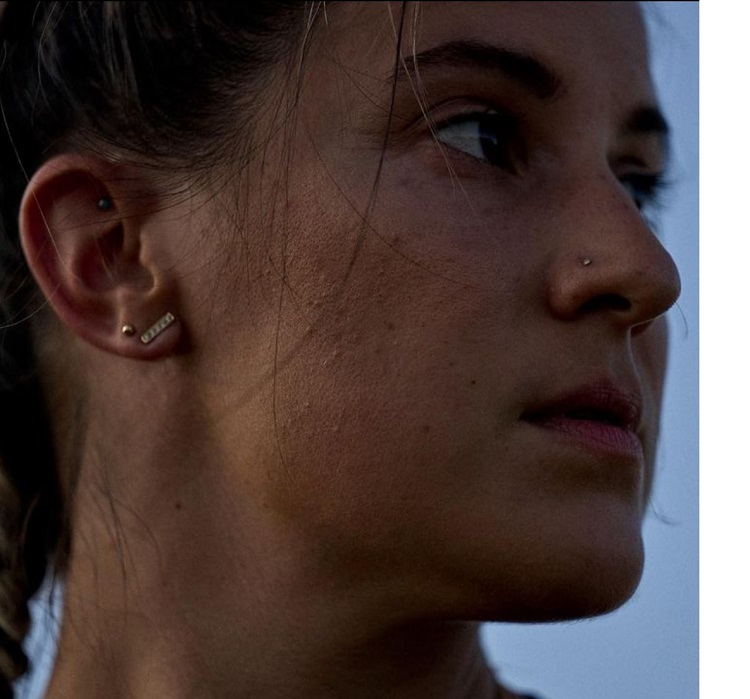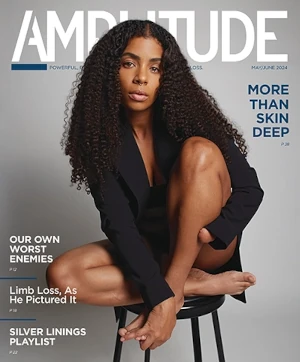by Lacey Henderson

“She’s young and she’s an athlete, so her socket must be easy to fit.”
I must have heard a million versions of this comment during my ten-plus years working in the prosthetics industry. From 2011 until 2021, I modeled new products at trade shows, conferences, and clinics around the country, showcasing the the latest technology for clinicians and amputees. I heard “she must be an easy fit” so many times at those events that I started believing it myself. It kind of made sense. After losing my leg above the knee to cancer at age nine, I had evolved from a good high school athlete to a Division I college competitor to a 2016 Paralympian, and my sockets never held me back.
Throughout that journey, I worked with a single prosthetist. He never once put limits on me but instead embraced the challenges I set for myself—and for him. Early in our relationship, he told me: “If there is one day that you are in pain because of your socket, then I am not doing my job right.” That was one heck of an expectation to establish, but he met it. Any time I had any type of discomfort with my socket, he addressed it immediately.
As I got more serious about my Paralympic career, I moved to a different state where I could train year-round. I tried maintaining a long-distance relationship with my prosthetist, but it was hard. Ultimately, I decided to find someone closer to where I lived. I told myself maybe I really was an easy fit because of my athleticism and prosthetic literacy. Maybe I didn’t need to hold on to my childhood clinician so tightly. So I jumped. I signed on for a new leg from a new clinical team with a totally different fitting process.
With my old prosthetist, making a new socket was an arduous procedure. Sometimes it took three people, with me sweating and adducting my limb, to cast a socket that would protect and support my body. My new experience required a series of measurements and some photos—no casting, almost no touching of my residual limb. It seemed so much easier than the months of back and forth I used to go through. I was excited to try on the check socket.
But when I put it on, something felt off. We made a few adjustments and I switched to my new running leg, but I had a terrible year on the track. My marks went way down, and my limb started changing colors. Things were no better away from the track. I stopped walking my dog. When I traveled for meets, I dreaded basic things like the walk from my hotel room to the breakfast buffet.
When I reported these things to my clinician, instead of helping me solve the problem, he kept telling me the socket was hurting my limb because I was gaining weight. Somehow, after 20-plus years of pain-free sockets, this one bad experience was my fault.
Things got so bad that I finally decided to move home and return to my old prosthetist. He refused to see me at first, and understandably so. He had spent loads of extra time and effort to support my athletic pursuits, and I hadn’t honored our relationship. I didn’t respect that excellent solutions take time, energy, and a shared commitment. Because I took those things for granted, I had to learn the hard way that I am not an easy fit. I have a really short limb, soft squishy residual tissue, a lateral bone spur… the list goes on.
But those “problem points” don’t make me unique. All amputees have certain traits that complicate the fitting process. What made me unique was that I had only worked with a committed practitioner who was eager to help. I didn’t realize that bad socket-fit experiences are unfortunately more common than good ones.
This recognition helps me understand why more people seem to be opting for osseointegraiton (OI). This surgical procedure connects the prosthesis directly to the residual bone, eliminating the need for a socket—and for the skills of a prosthetist. That’s bad for business, but it can be great for those “problem” patients who’ve endured chronic socket issues—and chronic encounters with clinicians who aren’t committed to finding a solution.
As someone who has spent so much time in the industry, I get why some prosthetists aren’t wild about OI. No skilled clinician wants to be reduced to a Jiffy Lube clerk, performing minor service checks. But frankly, after my recent experience, I am considering OI myself once my longtime clinician decides to retire.
A coach once told me, “Seek solutions, not excuses.” That’s what the best prosthetists do—they build solutions for people that need them. I now understand that practitioners and patients both have to honor that commitment to get results that empower amputees to chase our dreams.
Lacey Henderson is a Paralympic athlete, model, and influencer. Follow her on Instagram at @laceyisyourfriend.




